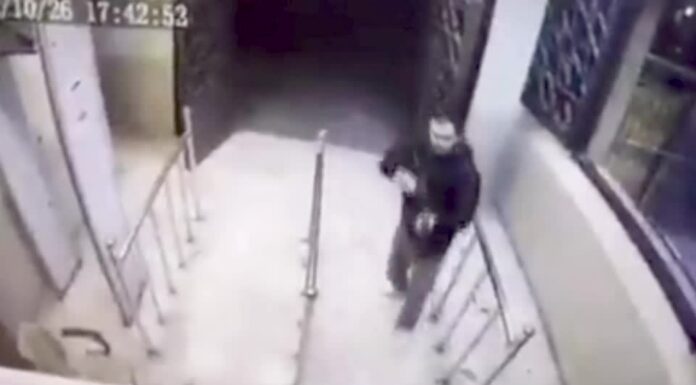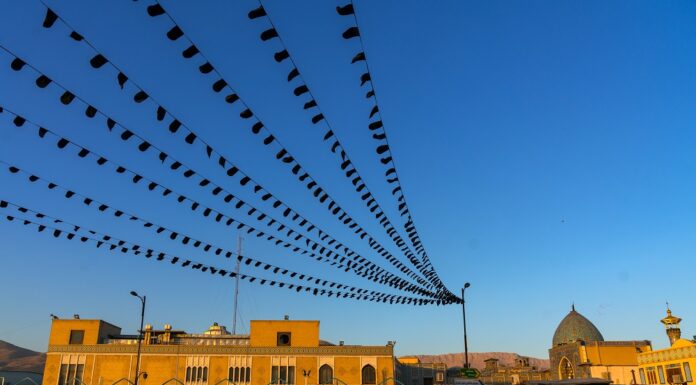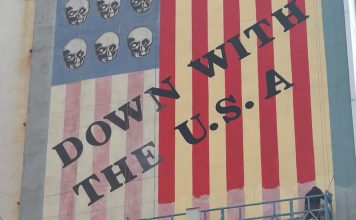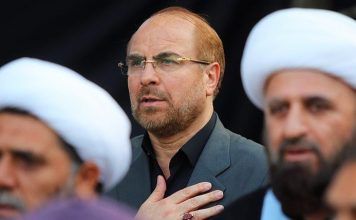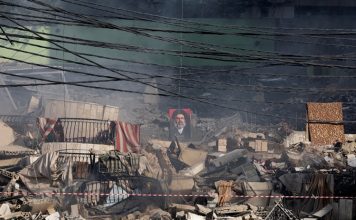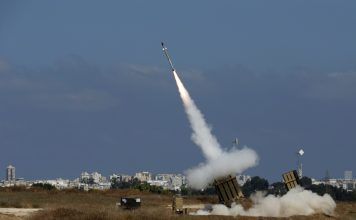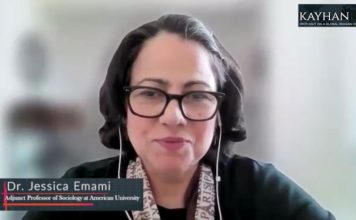
By Potkin Azarmehr
A false flag operation is defined as an act committed with the intent of disguising the real source of responsibility and blaming it on another party to justify further action. The Islamic Republic of Iran is not the only state with a track record of false flag operations, but the ruling Ayatollahs in Iran seem to have a particular disregard not only for innocent lives but even for their own Shia sacred shrines.
The Islamic Republic of Iran recently claimed that ISIS (the Islamic State) had carried out a murderous attack against worshippers at the Shah Cheragh Mosque, the Shia holy shrine in Shiraz. The regime’s past track record and the way it has tried to blame the protesters for providing the opportunity for the attack makes many Iranians believe this was yet another false flag operation.
On 26 October 2022, five weeks after the latest nationwide protests erupted in Iran, a lone unmasked gunman carried out a mass shooting at the Shah Cheragh holy Shia shrine in Shiraz, South Iran. At least 13 worshippers including women and children were killed.
Iran State TV interrupted its programs, including a children’s program, to show horrific CCTV footage of a lone gunman with an AK47, shooting single rounds at innocent worshippers who were either fleeing the scene or cowering, in vain, for cover.
Iran’s state media quickly blamed the Islamic State for the bloodbath. To back up the claim, it was reported that the Islamic State had claimed responsibility for the attack on their Telegram App channels, saying: “our sources told Amaq Agency that a fighter from the Islamic State set out to destroy the so-called Shah Cheragh shrine in the city of Shiraz, South Iran”.
ISIS however has dubiously claimed responsibility for other attacks in the past with the aim of gaining global notoriety, such as the attack on a casino in Manila, the capital of thePhilippines, in 2017.
Adrian Calamel, a New-York based terrorism and Middle East scholar, gave an interview to Manoto TV listing discrepancies between the CCTV footage of the attack aired on Iranian state TV, and a typical ISIS attack.
Calamel pointed out that the lone gunman’s AK47 automatic weapon, which was used in the attack on Shah Cheragh shrine, jammed several times, with the gunman firing single shots at his victims.
“ISIS attacks are generally more sophisticated and meticulously planned using a backup team, rather than” the “amateurish” scenes shown on the CCTV footage of the attack”, Calamel said.
Generally, “instead of firing single shots, ISIS operatives fire a volley of shots to cause more mayhem and inflict maximum casualties.”
Calamel also pointed out that attacks by ISIS on Shia shrines and mosques in particular are usually done with explosives so as to destroy their symbolic importance as well as to increase the body count.
Adrian Calamel asked why ISIS had not released a Shahadah video. ISIS operatives on similar suicide missions usually record a Shahadah [Martyrdom] video before their mission in which they profess their faith in Allah as the sole deity and Mohammad as his messenger. The video is then released after their mission, but at the time there was no such videos.
Soon after Adrian Calamel’s interview was aired to viewers in Iran, an attempt to prove that a “martyrdom video” existed was made and this video was released. It was not however an archetypal ISIS “martyrdom video”. The person in the video was wearing a balaclava and there was no way of verifying if it was the same man who carried out the mass shooting in the Shah Cheragh shrine.
The “martyrdom videos” released by ISIS after their operations usually reveal their identity, rather than hiding them.
There were further inconsistencies and changes in the official state narrative. The Islamic Republic’s Ministry of Intelligence first identified the attacker as Hamed Badakhshan, an Afghan national, and said he was operating alone. They then claimed that others had been working with him, and that they were arrested after their hideout was raided by the “heroic unknown soldiers of Imam Zaman” — a reference to Iran’s intelligence agents.
Another video was released claiming to be the attacker’s accomplice who had been captured, confessing to how he was recruited and paid by the Islamic State to be the backup for the attack on the shrine. The so-called accomplice looked like a young man deprived of several days of sleep but nothing like a typical Islamic State terrorist.
It was also clear who the regime was trying to lay the blame on. The IRGC-affiliated Farsnews agency report on the arrest of the attacker’s accomplice said: “ISIS is only partially responsible for the attack. They merely exploited the opportunity given to them by the rioters. Those celebrities backing the rioters and those misguided teenagers protesting on the streets also bear responsibility.”
The latest news from Iran’s Intelligence Ministry on its success at dismantling the ISIS network is that 26 people have now been arrested. The name and the nationality of the attacker has been changed again. Iran’s Intelligence Ministry has now named the attacker as Sobhan Komrooni, a Tajikistan national.
Despite all the attempts by the regime to use the Shah Cheragh massacre as an opportunity to defame and blame the protesters and use it as a pretext to justify an even more brutal crackdown, most people in Iran have not bought the regime’s story, and the protests have continued.
Iranians have good reason not to believe the state narrative on what happened at Shah Cheragh and regard it as yet another false flag operation by the regime. They remember how the regime tried to deny that their own missile was fired at the Ukrainian Airline passenger flight 752, on 8th January 2020, killing all 176 passengers and crew.
They also remember the bombing of the Imam Reza holy shrine in Mashad, northeastern Iran, in 1994. The Imam Reza shrine is the holiest Shia shrine inside Iran and when a bomb explosion occurred inside it on the day of Ashura, the holiest day in the Shia calendar, the regime first blamed it on an opposition group. Five years after the explosion however, during a trial in November, 1999, the former Iranian Minister of Interior, Abdollah Nouri, revealed that it was a false flag operation.
Mehdi Nahvi, the man who was first accused of bombing the shrine, was shown on state TV as he lied injured on a hospital bed, saying: “I did the bombing because the Mojahedin e Khalq ordered me to and I have nothing else to say.” Nahvi died after that interview but later investigations revealed that he was in prison at the time of the bombing and could not have possibly been responsible. At the time the regime was under international pressure for the abduction and murder of two Christian priests and wanted to use the armed Mojahedin opposition group as the scapegoat, claiming the group was trying to destabilize Iran and discredit the regime.
The Islamic Republic’s false flag operations have not been confined to within Iran. The regime is also implicated in the attack on the Askari Shia holy shrine in Samarra, Iraq, with the aim of engulfing Iraq into a Sunni-Shia sectarian war.
Even before the 1979 revolution in Iran that deposed the Shah, the Islamist revolutionaries set the Rex cinema on fire in Abadan, southwest Iran, which resulted in 470 people being burned alive inside the movie theatre. The Islamist revolutionaries blamed the Shah’s secret service, SAVAK, for the attack, but today it is proven beyond any reasonable doubt that the hideous crime was carried out by the revolutionaries themselves with the aim of vilifying the Shah’s secret police and instigating insurgency in Iran’s oil rich region.
Interestingly, the students in Tehran university chanted “Shah Cheragh is another Rex, this is just one more pretext,” during a protest after the attack.
Whether the attack on the Shah Cheragh shrine proves to be another false flag operation by the ruling Ayatollahs or not, it is not stopping the overwhelming majority of Iranians from wanting the overthrow of the Islamic Republic. As Ali Karimi — the popular former Iranian footballer and coach who has been vocal in his support for the protests — posted on his social media account: “What happened at Shah Cheragh was a crime. If it was your own doing, then you are murderers. If it was done by outsiders, then you are incompetent.”
Historic Shiraz Houses May Be Destroyed to Expand Shah-e-Cheragh Shrine

